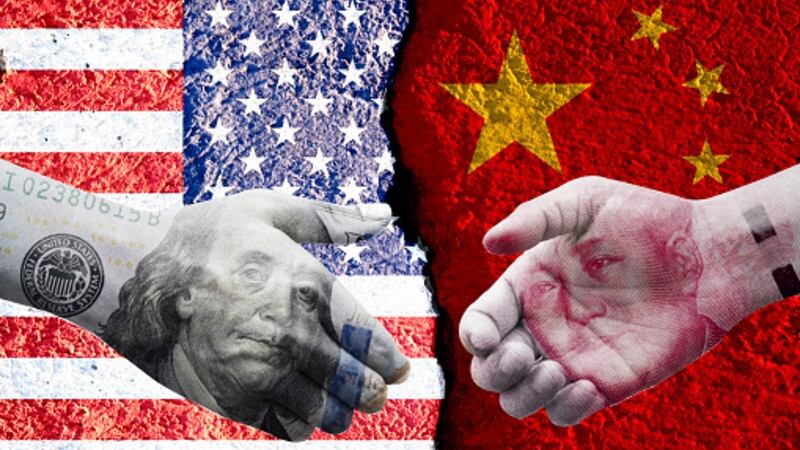The primary expectation for the food and beverage industry is a ‘normalisation’ of trade relationships between the United States and countries in APAC after a ‘tumultuous’ few years.
“Overall, we definitely expect much less chaos in US trade relations with countries in APAC, than has been the ongoing situation over the past few years [under Trump] – I’d really say that normalisation [of trade relations] is finally in sight,” trade consultancy firm ITS Global Director of Market Access Jon Berry told FoodNavigator-Asia.
“Even when it comes to China, with which the United States has been engaged in a trade war for some time, the situation is likely to be more normal now, more of ‘competition’ instead of ‘conflict’- that’s not saying that Biden has said he is going to do anything drastic like immediately remove all the tariffs Trump enacted on China goods – he’ll still want to take the gains forged by Trump’s moves, essentially.
“The rest of the world wants both the US and China to ditch the tariffs enacted as part of the trade war, but what’s more likely to happen is that both sides will probably approach this slowly and remove them bit by bit. That said, with Biden there is now a good chance that the tariffs will be removed earlier instead of later for food products.
“This is because it is not a priority for the US to keep these tariffs in place in terms of food as opposed to commodities they may be more protectionist of, like steel, cars and the like. It would be beneficial for Biden to remove this to repair relations with China as he really would not be giving up anything overly ‘valuable’ to the US, and China would respond in kind as it would help bring down food prices in the country.”
In addition, as a result of this ‘normalisation’ it is expected that a lot more investment from the United States will be entering not only China, but also the rest of the Asia Pacific region under Biden’s administration, particularly for the food industry.
“What this normalisation will mean is more certainty over trade conditions for US-Asia trade, especially, so more predictable economic patterns and better risk assessments can be made leading to more investment by the US in Asia, and we expect this especially from big food firms,” ITS Global Director of Policy Khalil Hegarty said.
“Because if you look at it, the main factor that really sells American food products in Asia and especially South East Asia is really the investment – for example what sells Kelloggs’ cereal in ASEAN is definitely not products that are getting exported from the US, but rather their plants being located here in Thailand or Malaysia and feeding the local market [with price-competitive products].
“So I’m talking about big US food firms boosting up investment in the region, people like maybe Kelloggs setting up more or upgraded plants in Thailand or perhaps PepsiCo in Vietnam. Now those larger companies feel more confident, they’ll be bringing in more of these larger investments into the region where they were hesitant before – that’s good news not just for consumers as these products will be made for local consumption, to suit local tastes, and also be cheaper than being imported.”
CPTPP rejoining possible but not so soon
One of the most significant trade moves Trump made upon his election in 2016 that affected Asia was to withdraw the United States from the Trans-Pacific Partnership (TPP) agreement [which later evolved into the Comprehensive and Progressive Agreement for Trans-Pacific Partnership (CPTPP)]. Other countries in the agreement were Australia, Brunei, Canada, Chile, Japan, Malaysia, Mexico, New Zealand, Peru, Singapore, and Vietnam.
Hopes are high that Biden will pave a way back into the CPTPP for the US, but according to Hegarty there are still a fair few hoops to go through even without Trump, so this is unlikely to materialise very quickly.
“Trade is not that high a priority for the new administration, so it’s going to be hard to sell to Congress first of all, and more importantly the US would want to make changes to the agreement that Asian countries may not want to accede to,” said Hegarty.
One of these would likely involve labour issues, something that Asian countries particularly South East Asia, would likely struggle with.
“In the US-Mexico-Canada agreement, there was a lot of focus on labour rules where a certain percentage of goods would have to be made by workers that made a certain wage in order to qualify – this was strongly supported by both Republicans and Democrats, so if the US wanted to enter the CPTPP they would likely want a similar provision,” said Berry.
“Something like this would not be an issue for Japan or Australia, but it would be a major one for ASEAN countries where a lot of the goods, including food products, would not qualify to export to the US under the CPTPP – it would be a huge challenge for many countries.”
“That said, the US joining the CPTPP at some time in the future is now at least prospective and not completely impossible – it all depends on how trade relations play out from here on out and at the very least there is now more stability to be found.”
Less rosy for some
However, one industry that might be less thrilled at the news of trade normalisation is beef, as this would set the scene for more competition in the APAC market, especially over markets with large beef consumption such as China and Japan.
“So far, the US has not really been very successful in exporting beef to Asia whether it be due to trade agreements or phytosanitary reasons or others – but if this normalisation leads to the US doubling down on efforts to get past these barriers, it would not be good news for other producers supplying to the region,” said Berry.
“The US is a really big agricultural producer, so its entry into Asia would definitely mean lots of increased competition for others like Australia or Europe and this would likely affect prices too. All eyes are really on big beef markets like China and Japan – if a lot of US beef enters these countries at good tariffs, it’s going to be bad news for other producers.”





